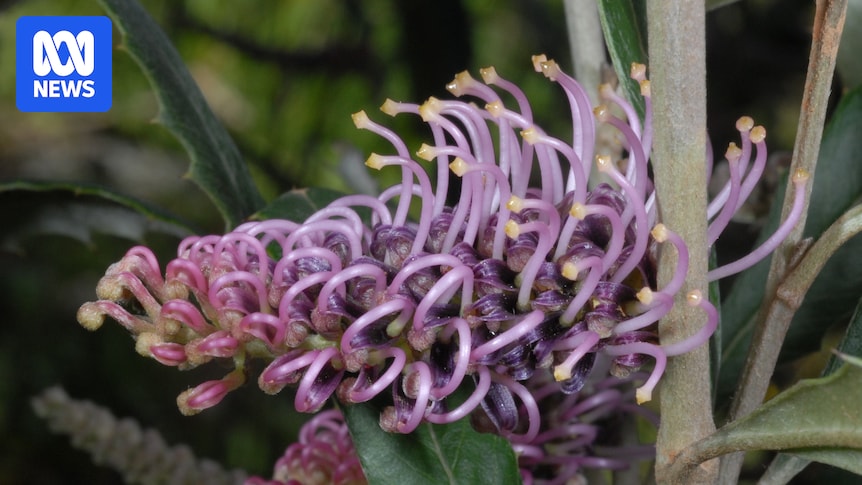Ecologists have enlisted dozens of southern New South Wales residents to help repopulate a critically endangered blossoming shrub.
The Tumut grevillea has fewer than 1,000 plants left in the wild and is only found in a 6-kilometre stretch of land alongside the Goobarragandra River, in the Snowy Mountains.
As part of the NSW Department of Climate Change, Environment, Energy and Water’s (DCCEEW) Saving Our Species program, the organisation partnered with Riverina Local Land Services (LLS) to deliver a series of educational workshops on the native shrub.
More than 45 people attended, including adults and children from Tumut and surrounding areas, and were given cuttings and taught propagation techniques to try to grow it at home.
LLS senior officer Cherie White said she hoped the workshops inspired a new generation of people to save the plant.
Cherie White hopes the workshops will inspire people to care for the Tumut grevillea. (ABC Riverina: Jess Scully)
“It’s really important to engage with the local community and watch them be excited about the grevillea and its recovery,” she said.
The native shrub is also connected to women’s business in First Nations culture, as it is found around culturally significant sites to the Wiradjuri and Walgalu people.
As part of regeneration efforts, the DCCEEW and LLS enlisted the help of First Nations people from the Brungle Tumut Local Aboriginal Land Council and the NSW National Parks and Wildlife Service to plant 60 seedlings along the Goobarragandra River.
Propagated Tumut grevilleas were planted along the Goobarragandra River. (Supplied: Dr David Hunter)
Dwindling numbers
DCCEEW threatened species officer David Hunter, who also led the workshops, said the plant was a “spectacular shrub in bloom”.
“It has these incredible purple toothbrush-shaped flowers that cover the plant,” he said.
“[It] attracts lots of birds and insects and really brings a vibrancy to the bush.”
Dr Hunter said land modification after colonisation, such as land clearing, had impacted the plant’s numbers.
David Hunter says the Tumut grevillea is beautiful when in bloom. (ABC Riverina: Jess Scully)
“Undoubtedly, prior to European settlement, the Tumut grevillea would have had a much broader range,” he said.
“As of the late 1990s, there were about 300 adult plants remaining in the wild but over time has declined to fewer than 60 in the wild.”
Dr Hunter said grazing by introduced species, domestic stock and feral animals — particularly deer — had also caused numbers to dwindle.
Protecting the rare plant
Ms White said the Tumut grevillea was difficult to protect, because it was challenging to gather seeds and propagate.
“That’s probably part of its demise because it has a fairly large seed and parrots, especially king parrots, are really attracted to it,”
she said.
To collect the seeds without them being eaten by opportunistic birds, LLS staff placed bags over the plants while the seed ripened.
“It ripens, it drops off into the bag, and it doesn’t get eaten by the parrots,” she said.
Dr Hunter said he hoped residents would have success propagating the plant and help restore its population.
“It’s an extremely special plant,” he said.
“It would seem a shame not to look after it and allow future generations to also appreciate the beauty of this amazing plant.”
